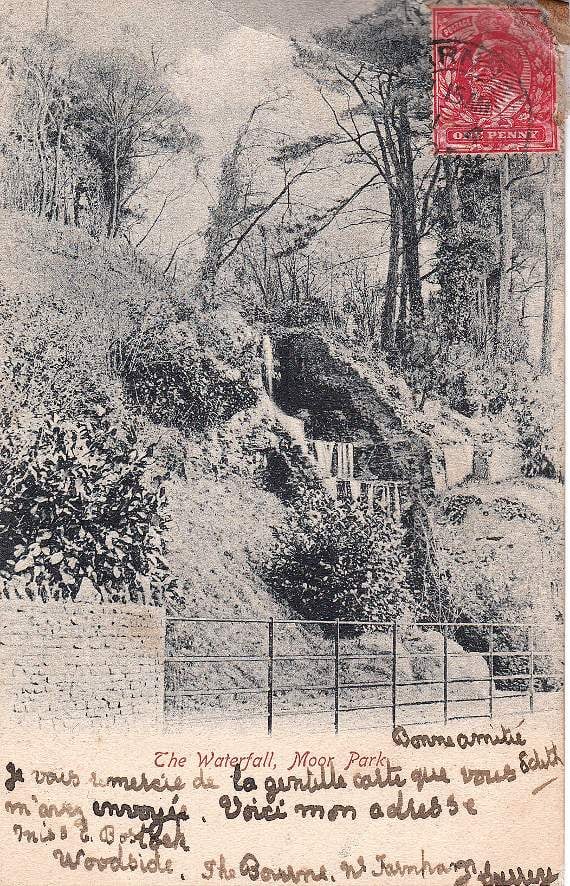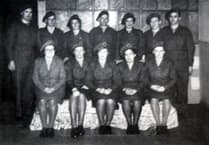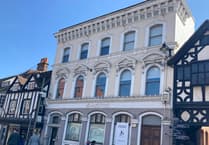HAVE YOU, like me, been noticing fragments of the area’s past during your daily exercise walk?
Undoubtedly these will raise questions and perhaps now is a good time for us to share these local discoveries and, through the power of the column and its associated Facebook page, we may be able to find some answers through our very knowledgeable readership.
If you discover a curiosity on your wanderings, why not grab a photograph of it and send it, along with its location and anything you already know about it, to me via email peeps@chrispics.co.uk (sorry, currently I’m unable to collect postal items sent to the Herald office but they’ll still be there waiting for when this is all over).
Just to set the ball rolling, this strange cleft in the rocks alongside Moor Park Lane in Farnham, close to the railway bridge, has always intrigued me. Recently it has been cleared of much undergrowth and debris and the warning sign erected behind a new fence.
It is thought to have once been a garden waterfall connected with Rock House, which sits on top of the hill above. The latter fact is borne out by the postcard view from Jean Parratt’s collection which shows the waterfall in spate and probably dates from the early 1900s.
Guy Singer has managed to find some other postcards which seem to confirm that date, including a hand-coloured example published by Valentine’s in 1903 and this almost engraving like image from 1905.
The latter was sent from a Miss Edith Bostock living in the Bourne to an address in Neufchatel-en-Bray, France, so the waterfall was drawing attention from near and far.
However, the question that is always in my mind is why would the owner of Rock House build a garden feature that couldn’t be appreciated from his own house or, indeed, really from within his own grounds?
The answer lies within the pages of the book Watermills of Surrey by Derek Stidder published in 1990 (and undoubtedly other similar volumes too). Derek writes: “Rock Mill, Farnham. Tributary to River Wey SU 857472 – Located adjacent to a track leading to Moor Park.
“Only the massive brick foundations remain to mark the position of what was once a powerful watermill. Rock Mill does not stand on an ancient mill site but was in the grounds of Rock House, the family home of the Simmonds family, who were prolific millers and corn merchants in the Farnham area.
“The house was built in 1770 and the mill was probably erected at the same time. In 1832 William Mellersh was the miller, no doubt an employee of the Simmonds’. Thomas Simmonds himself took over by 1845. His son, also Thomas, succeeded his father and by then the mill was steam assisted.
“The mill closed down in 1877, with Richard Simmonds the last owner, and the first attempt to sell it took place later that year. The sale notice makes reference to five pairs of stones driven by a 10hp Corliss engine; it was sold for £1,200, and later on, in September, Richard Simmonds inserted the following notice in the Surrey and Hants News: ‘Richard Simmonds begs to inform his customers, and the general public, that he has removed his business from Rock Mill to the new steam flour mills at Albert Road, Aldershot, on Monday, September 17 and that orders addressed to him will receive his prompt and best attention’.
“The water which originally used to drive the mill still tumbles down through the site from the gardens of Rock House, and it is clearly visible from the track that leads to Moor Park.”
So now we know the answer to the question but in my mind at least it leaves another: Do any illustrations of the complete, obviously fairly large, Rock Mill exist?
It is one of very few Surrey mills of the 19th century that doesn’t seem to have been photographed. Also looking at the lie of the land, I wonder how the mill got enough water to operate properly, being situated on top of a hill, not in the valley below.
If you can shed any light on the story of Rock Mill, or indeed have similar queries of your own, please do get in touch. Let’s see if the Peeps ‘team’ can begin provide a few answers collectively.
* By Chris Shepheard in association with the Rural Life Living Museum. Email your responses and fresh nostalgia appeals to peeps@chrispics.co.uk





Comments
This article has no comments yet. Be the first to leave a comment.